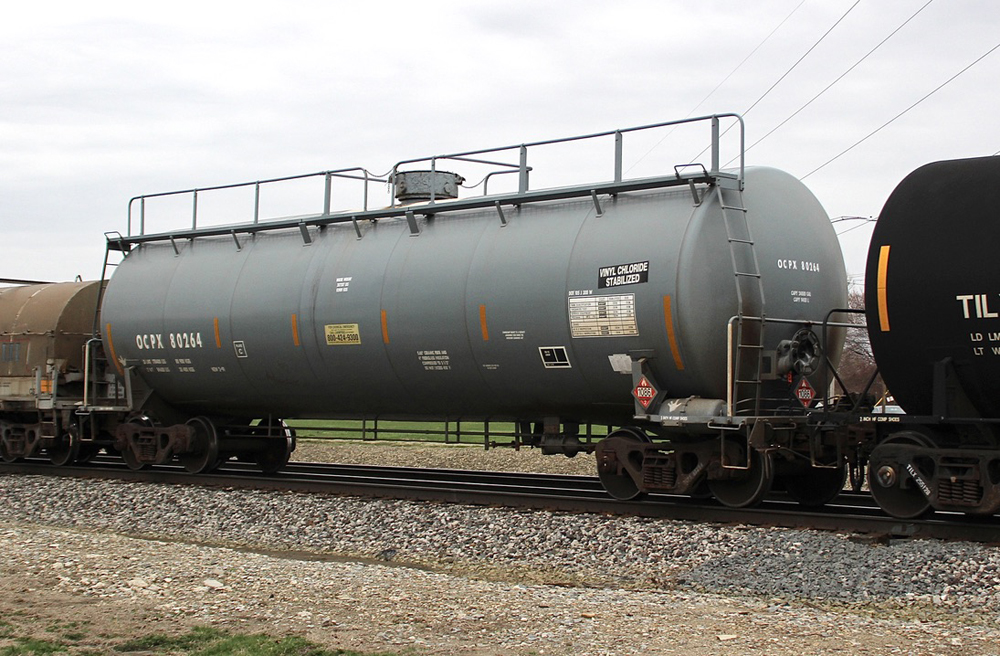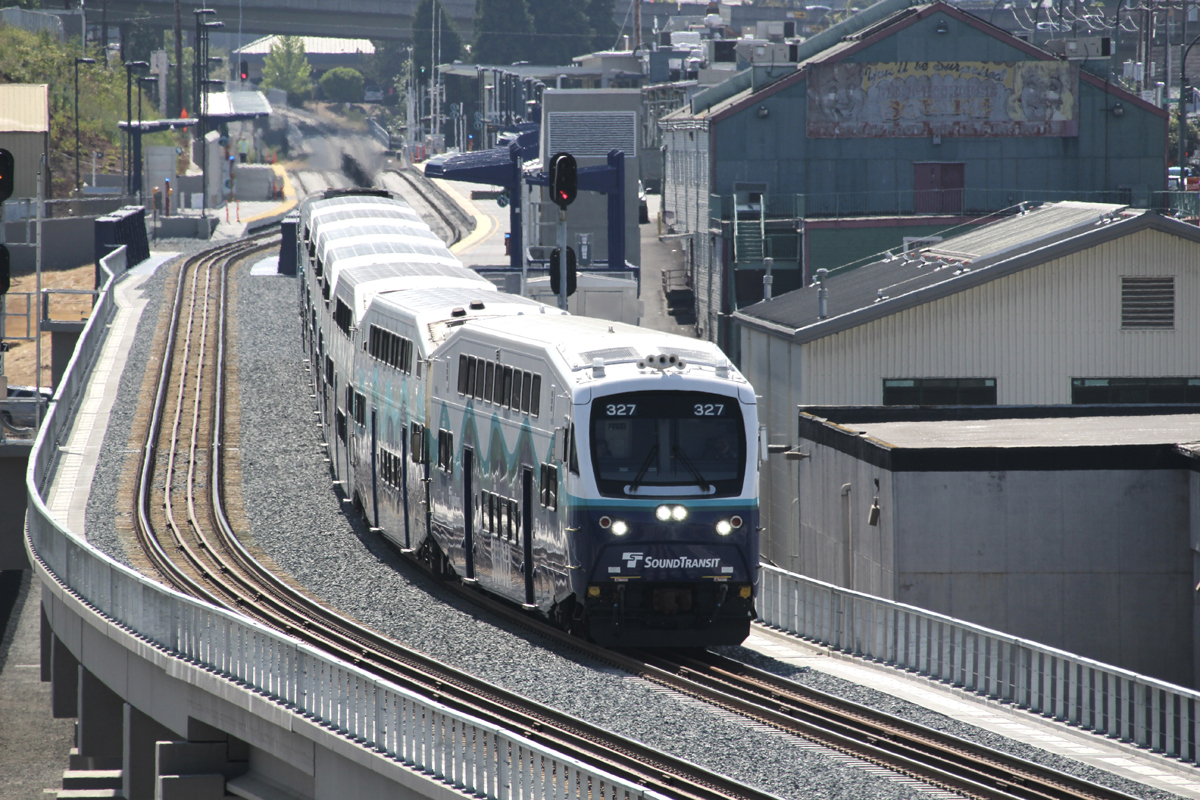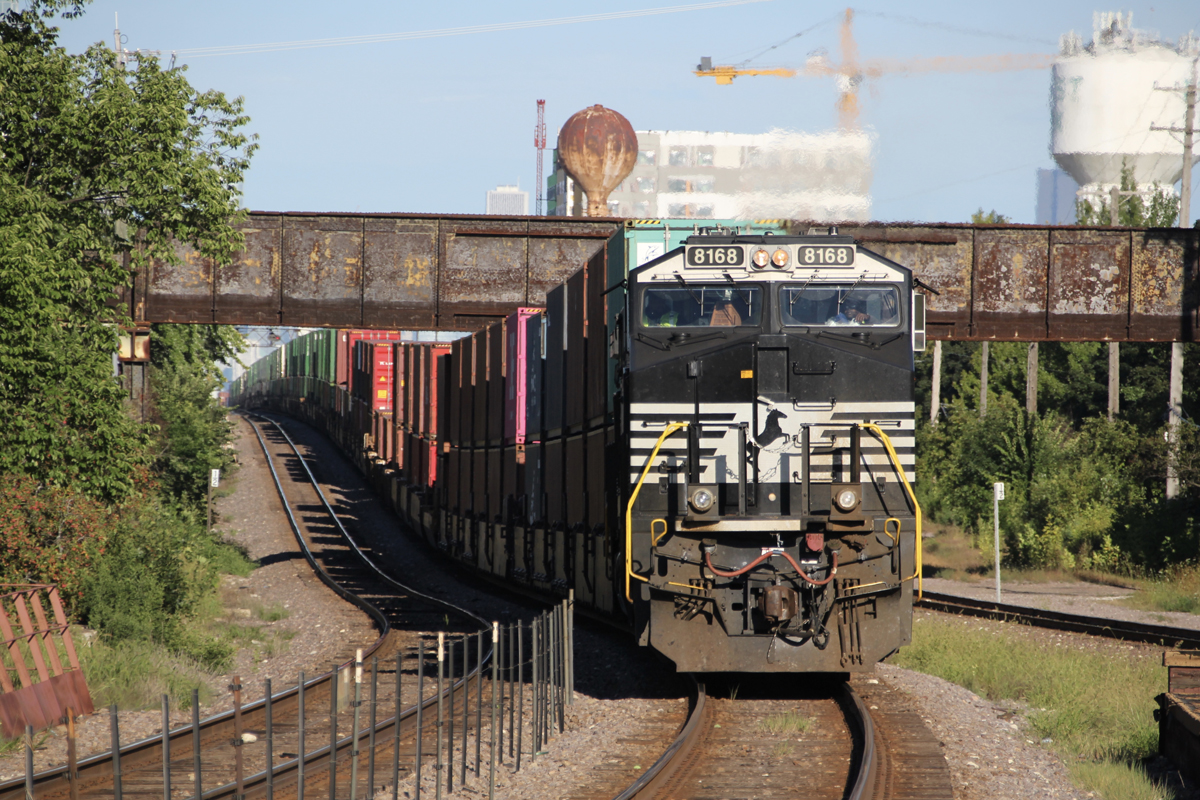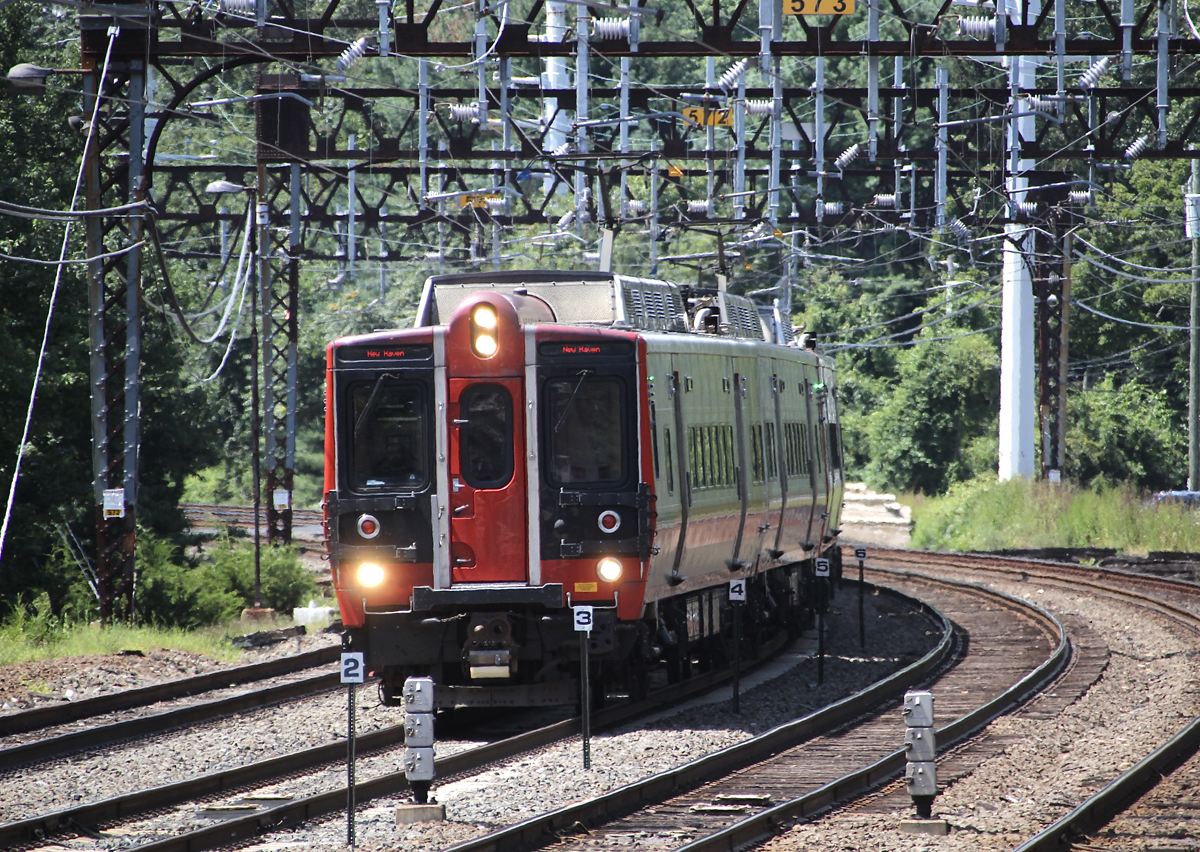
WASHINGTON — A bipartisan group of senators has filed legislation designed to prevent derailments like the Norfolk Southern wreck that released toxic chemicals and upended life in East Palestine, Ohio.
But the Rail Safety Act of 2023 also goes much further by proposing rules that would limit train length and tonnage, mandate a crew size of at least two people, and require railroads to prevent blocked grade crossings.

“Through this legislation, Congress has a real opportunity to ensure that what happened in East Palestine will never happen again. We owe every American the peace of mind that their community is protected from a catastrophe of this kind,” said Sen. J.D. Vance, R-Ohio, one of the bill’s sponsors.
NS train 32N derailed in East Palestine on Feb. 3, just moments after a wayside defect detector warned of a hot axle on the 23rd car in the 149-car train. The National Transportation Safety Board has said the catastrophic failure of a wheel bearing on the hopper car likely caused the derailment, which released hazardous chemicals including vinyl chloride.
The measure, introduced in the Senate today, would broaden safety regulations covering trains carrying hazardous materials. Any train with hazardous materials would have to follow procedures that currently apply only to high-hazard flammable trains, such as speed restrictions through urban areas.
Currently, high-hazard flammable trains are defined as those transporting 20 or more loaded tank cars of a Class 3 flammable liquid in a continuous block, or a train carrying 35 or more loaded tank cars of a Class 3 flammable liquid throughout the consist.
Railroads also would be required to provide state emergency management officials with advance notice of hazardous materials shipments traveling through their states.
The bill also would enhance safety, the senators said, by imposing the first rules governing train length and weight. Instead of specifying limits, the bill would order the transportation secretary to determine appropriate rules.
To reduce the risk of wheel bearing failures, the bill calls for the first regulations governing wayside defect detectors. Chief among them: Requiring railroads to place hotbox detectors every 10 miles on trackage that carries hazardous materials. Detectors are currently spaced around 20 miles apart on most railroads.
The bill also orders the secretary of transportation to develop a minimum amount of time car inspectors must spend checking out each freight car and locomotive before a train’s departure from a yard.
The lawmakers also called for the faster phase-out of older design tank cars. DOT-111 tank cars would no longer be permitted to carry hazardous materials as of May 1, 2025, or four years ahead of the current deadline.
The Rail Safety Act also proposes significantly higher fines for safety rules violations.
Many of the bill’s provisions mirror Transportation Secretary Pete Buttigieg’s Feb. 21 call for legislation that would improve rail safety, including increased funding and hazmat training for first responders.
The Association of American Railroads and the American Short Line and Regional Railroad Association are reviewing the legislation and were not able to immediately comment on the bill this morning.
The Rail Safety Act is sponsored by Vance and Sens. Sharrod Brown, D-Ohio; Bob Casey and John Fetterman, D-Pa.; Marco Rubio, R-Fla.; and Josh Hawley, R.-Mo.
The East Palestine derailment has become a political football, with Democrats and Republicans accusing each other of not doing enough to regulate rail safety or respond to the disaster.
“It shouldn’t take a massive railroad disaster for elected officials to put partisanship aside and work together for the people we serve — not corporations like Norfolk Southern,” Brown said. “Rail lobbyists have fought for years to protect their profits at the expense of communities like East Palestine and Steubenville and Sandusky. These common-sense bipartisan safety measures will finally hold big railroad companies accountable, make our railroads and the towns along them safer, and prevent future tragedies, so no community has to suffer like East Palestine again.”
To date, Norfolk Southern has provided $11.9 million in direct aid to East Palestine.














I disagree. Positive Train Control was imposed on the railroads and that was a very expensive effort.
If airlines are able to cut tragic crashes, then railroads need to come into the 21st century and focus on safe operation.
Every crew needs an infared detector to check wheel bearing heat. Its as simple as pointing the gun at all the wheel bearings and if one is way beyond tolerance set out the car.
Way too many chances are being taken. NS is still taking a hard stance on safety to get performance and profit.
The plantation mentallity lives on!
SPECIFIC TO THIS INCIDENT, I fail to see that by requiring two crew members (in addition to the other requirements of the bill), “Congress has a real opportunity to ensure that what happened in East Palestine will never happen again.” as stated by the Congressman.
Especially since there were two crew members on board the locomotive at the head of that train. smh
I agree with detectors every 10 miles that broadcast on the train radio for “heated up” not failed bearings. Get earlier warning that way. Additionally I think they should go back to 260,000 lbs. maximum weight per car on same size bearings as currently used. Congress needs to understand with war on pipelines only the railroads can carry fuel, highly flamable in the amounts needed.
Just outlaw derailments. One sentence of new law. Problem solved, meeting adjourned to the tavern to congratulate each other.
Unless they met there to save time, which would explain the sparsity of logic.
Just scratch out congress in Article I of the constitution and replace it with Secretary of Transportation. SMH
Hmmm. The train showed a progressively warmer bearing on three, repeat, THREE detectors. The detectors did not alert the train crew; instead they notified a person in the back office. NS criteria did not call for the train crew to be notified of the first two readings (too low? but they were progressing upward) and when the crew was notified of the third reading, the axle failed almost immediately.
My second note is, with modern air brakes, why didn’t the train stop sooner?
As far as I know the brakes worked as they were supposed to. Once the first car derailed the and the air was lost the train went into emergency as it was designed to do. Unfortunatley once a train goes into emergency a major derailment can happen. It all depends on a number of things, speed, grades curvature among other things. Since the train was traveling a 47 when it went into emergency, the pile up of cars is not surprising.
As the air releases out of the train line, the brakes start applying from front to back, except in emergency when the air evacuates all at once. The engineer was probably applying the brakes gradually trying to bring the train to a safe and controlled stop as quickly as he could. Mr. Crowe described it very accurately.
From the NTSB report: ” There were no reported fatalities or injuries “
Lets just quit hauling this kind of stuff, let the truckers do it, and watch the communities complain about the significant uptick in semis going thu their little towns with all this hazardous goop….Guess they showed us.
There are not enough truck drivers in this country to haul all the hazardous materials that trains carry. Since the start of the COVID Pandemic we are still down 3 million truck drivers. Also, trucks are five times more probable of being involved in a wreck as a train is to derail. And there are 12 times as many trucks on the road as there are trains, doing 65-70 mph where trains in cities are maybe 45-50 mph because of grade crossings. I get you were making a point but this is just to show how illogical it is to think that one form of truck transportation is better than another or even other forms period.
Limits are placed on any train meeting the designation of a “Key Train.” The definition of a “key train” is any train as described in either a, b, or c below:
a.) One (1) or more loads of spent nuclear fuel (SNF) or high level radioactive waste (HLRW) moving under the following Hazardous Materials Response Codes 4929142, 4929143, 4929144, or 4929147, or
b.) Five (5) or more loaded tank cars containing materials that require the phrase “POISON/TOXIC-INHALATION HAZARD” on the shipping papers (Hazard Zone A, B, C, or D), anhydrous ammonia (Identification Number 1005), or ammonia solutions (Identification Number 3318) or
c.) Twenty (20) or more loaded hazardous materials shipments or intermodal portable tank loads having a combination of materials that require the phrase “POISON/TOXIC –INHALATION HAZARD” on the shipping papers (Hazard Zone A, B, C, or D), anhydrous ammonia (Identification Number 1005), ammonia solutions (Identification Number 3318), flammable gas (2.1), Class 1.1 or 1.2 explosives, or all environmentally sensitive chemicals (see Table 3).
Train length and max speed, such as limits used on unit oil trains could do a lot to make a difference. Current AAR requirements includes a “50-mph maximum speed for any ‘‘key train,’’ including any train with 20 car loads of any combination of hazardous material.’’ (AAR Circular OT–55–N) .
In February 2014, by way of AAR Secretary Foxx’s Letter to the AAR Railroad Subscribers, members further committed to a 40-mph speed limit for certain trains carrying crude oil within the limits of any High-Threat Urban Area (HTUA), as defined by TSA regulations (49 CFR 1580.3).
The commitments are already in place and the railroads have agreed to them as stated above. What needs to happen now is consistent enforcement and maybe some codification of these specific agreements where applicable. Trying to rewrite all the regs to cover every possibility is not even feasible as the NTSB has demonstrated through their investigations of commercial aviation disasters. They will tell you that the safety of the public in commercial aviation is “written in blood.”
The aim should always be prevention, not over-regulation. In the end, frivolous regulation cost everybody in higher rates and prices at the store. Common sense should rule the day followed by consistent enforcement.
Mr Saunders, letter b is incorrect. Only 1 tih/ pih is required to be a key train.
I sure hope I am wrong, but, Washington is all about money……and this will never come to pass, Big Money always prevails, political grand standing will become reality as the Wall Streeters get their hooks in on the act, and the politics of money prevails, a washed down, “see we did something” act will come of all this.
Sir, as much as I would like to disagree with you – the more realistic side of me says you pretty much nailed it.
I think it stands a chance in the Senate but will definitely be DOA in the House because of the exact reasons you stated.
I’m only surprised they didn’t come up with a cutesy acronym like “RAILS” (Rail Act for Intermodal Line Safety). Rail Safety Act is so boring. Of course if you are just going through the motions to file a PROP (Public Relations Opportunity) and not a REALMENRRSAF ACT (Real Meaningful RR Safety) Act then I guess we get what we voted for. Representatives in the Congress and Senate who only want their names on the Congressional Record so they can point to everyone else the next time this happens.